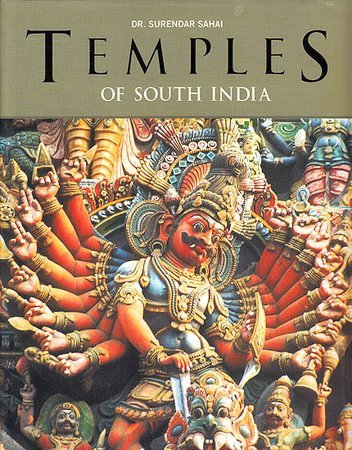Later Chola Temples
by S. R. Balasubrahmanyam | 1979 | 143,852 words
This volume of Chola Temples covers Kulottunga I to Rajendra III in the timeframe A.D. 1070-1280. The Cholas of Southern India left a remarkable stamp in the history of Indian architecture and sculpture. Besides that, the Chola dynasty was a successful ruling dynasty even conquering overseas regions....
Temples in Chidambaram
Vikrama Chola, who participated along with his father in the last years of the latter’s reign in the various temple-building and other activities, continued the expansion of the Nataraja temple at Chidambaram, so elaborately started by his father. It must be noted that during this period the combined efforts of these two rulers and their famous general Naralokaviran brought about a six-fold expansion of the campus of the temple. As mentioned in the earlier chapter on Vikrama Chola, he brought these constructional activities to a successful conclusion, which should have been around the tenth year of his reign and presumably decided to inaugurate the remodelled temple of Nataraja in a fitting manner, to which we have made reference, as contained in the Alangudi inscription.
Nataraja temple
Vikrama is reported to have given away all the tributes paid to him by the feudatories in his tenth year, towards the building and embellishment of the shrine of Nataraja, his kulanqyakam, the tutelary deity. Among the structural additions he made out of these funds, he mentions:
- the tirumaligai (wall of enclosure round Ponnambalam),
- the gopura-vasal (tower-gateway),
- the kuta salas (halls), and
- the bali fiitham, which he covered with gold.
We are not sure if Vikrama Chola made all these contributions during his reign, or was only toting up the contributions made during the closing years of his father’s by the three of them—his father, the general Naralokaviran and himself (SII, V, 458).
An inscription found at Chidambaram registers a gift of land made by a native of Tiraimur for a flower-garden at Manar-kudi-Kattalai, a hamlet of Jayangondasola chaturvedimangalam. It also mentions another gift of land in Pannangudichcheri alias Parakesarinallur, a hamlet of Perumparrappuliyur, with four tenants, for maintaining the garden and for providing the mantra-pushpa in the temple of Tiruchchirrambalam Udaiyar (ARE 268 of 1918).
An inscription of his fourth year from Tiruvengadu mentions a gift of land made for a flower-garden by the Assembly of Iruk-kaiyur (modern Erukkur) in Nangur nadu (now in Tanjavur district) to Tiruchchirrambalam Udaiyar at Perumbarrappuliyur (ARE 508 of 1918).
These building activities may have been undertaken by way of completion of continuing construction work on the second wall of enclosure, the gateway of the western tower (melgopuram) and the Hundred-Pillared Hall, which had been started by Naralokaviran, his feudatory and general. The western entrance to the temple through this second wall of enclosure, which is a grand gateway, was completed and named ‘the Akalankan TiruvasaP (see the photograph of the inscription found on a wall of the entrance). This second wall encloses the Nataraja shrine-complex comprising the Kanaka Sabha and the Chit the Govindaraja shrine, the dhvajastambham, the balipitham, the Sabha built during the days of Kulottunga I south of the new shrine ofNataraja, the edir-ambalam (the original temple of Tiruch-chirrambalam), yaga-salai and the famous site (chamber) from which the Devaram was recovered by Nambi Andar Nambi.
Among his other contributions to this temple should be mentioned the gift of a temple-car to carry the Divine Dancer in procession during the great festival instituted and named the Perum Peyar Vila after the king, the laying of a street also named after him, and the gifts of a kalpaka tree, a necklace of pearls, and dishes of pure gold. All these gifts were made on the 15th of April, a.d. 1128. The king takes great pride in calling the Lord of Dance, Nataraja of Chidambaram, his kulanayakam. He also constructed a large number of big mansions mani maligaigal) along the road by which Lord Nataraja is said to have been taken in procession for the sacred bath in the eastern sea about eight km. east of the city of Tiruch-chirrambalam.
In spite of the foundation of the Gangaikondasolisvaram temple in the new Chola capital by Rajendra I, the temple ofNataraja at Chidambaram, which had won the homage and patronage of Parantaka I and other Early Chola kings, and had acquired a halo of glory after the recovery of the Devaram hymns of the trio during the days of Rajaraja I, began to exercise a strong fascination over princes and people alike and the special devotion of this royal house to Nataraja reached the greatest heights in the reigns of Vikrama Chola and his son Kulottunga II.
By the end of Vikrama Chola’s reign, the completion of the first (inner) wall of enclosure, called Kulottunga- and also Vikrama-solan-tirumaligai, the construction of the second wall of enclosure (Vikramasolan tirumaligai), the completion of at least the main Amman shrine and the building of the Hundred-Pillared Hall at Chidambaram had taken place. The campus had expanded considerably and was to expand still more in the succeeding decades.
